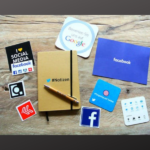Kick Off Your Community Marketing Program in Five Easy Steps
This is the final installment in our Community Marketing series. If you missed the first two, you can read them at https://fineviewmarket.wpengine.com/why-implement-a-community-marketing-strategy/ and https://fineviewmarket.wpengine.com/what-type-of-customer-best-responds-to-community-marketing/
Using what you’ve learned about community marketing, what can you do to build you brand in the community? Take a quick look at the following questions.
- Are you familiar with the area and do you know your competitive radius?
- Do you provide your managers with extra time to network?
- Have you ever hosted an event onsite?
- Is there a local chamber or other business organization worth joining?
- Have you ever mapped your customers to understand your marketing radius?
- Do you have marketing collateral that can be used to share your message?
Answering these questions is just the beginning of creating a successful program. Our 5-step process is crucial to moving your business forward in a way that will set you apart from your competitors.
STEP 1: Learn about the community.
Take a good hard look at your surrounding community. Do your research and know your market so that you have a fundamental understanding of your marketing radius and the types of marketing facilities that will be successful in your area. Understanding your neighbors and the behaviors of potential customers living in the surrounding area will help determine the best marketing mix and where to focus your efforts.
You marketing activities and competitive radius will change based on the type of market in which your facility is located.
- Urban Markets: Your competitive radius is less than 3 miles. Customers living in these densely populated areas are less likely to travel lengthy distances to run errands and shop.
- Suburban/Secondary Markets: Your customers will come from a 3-5 mile radius. This is the most typical self-storage market and will be most receptive to community marketing strategies.
- Tertiary Markets: Your competitive radius is 10 miles or more. People in these communities like to buy from people they know. Building relationships in these markets is vital.
Not sure into which market your facilities fall? Download a spreadsheet of your current tenants and create a custom map using Google. Looking at it from this perspective, it’s easy to see where to start.
STEP 2: Select effective community marketing strategies.
Effective community marketing campaigns will combine both offline and online tactics in one complete package. You can put your company name on a hat or on the back of a t-shirt, but those efforts are passive. You need to be active and engaged to make your presence felt.
Here is an overview of a few strategies that will help you get started with a successful community marketing program. Keep in mind that every community is unique. Be sure to adjust these strategies to fit the area.
1. Stand out with a well-designed business card.
Pass your business card out to everyone. For such tiny objects, they hold huge potential.
2. Make the most out of printed marketing material.
Flyers and brochures still get results as long as they are practical for reading and keeping.
3. Be visible.
Visit local businesses to start building your referral network.
4. Network your way to success.
Attend your local Chamber of Commerce monthly networking events, and attend all relevant business activities in your area.
5. Embrace the power of direct mail and snail mail.
You may miss out on the data that you derive from email campaigns, but you’ll stand-out among your email-only competitors. Send promotional discounts and announcements. Direct mail is the ultimate branding tool, showing the community who you are and where you are. This adds your location to those mental maps that we discussed earlier.
6. Participate in trade shows.
With suitable promotional materials, you’ll generate quality leads in just a few short days.
7. Use sponsorships, donations, and prizes.
When timing doesn’t allow you to attend an event in person, the next best thing is a sponsorship or donation. This is the perfect opportunity to extend your brand into the neighborhood.
8. Celebrate holidays with your customers.
Celebrate special occasions and milestones with your customers. A thoughtful, personalized greeting shows your clients that you care and that they are important to your business.
9. Don’t discount classified websites.
Websites like craigslist.com, nextdoor.com and even Facebook Marketplace can be an effective way to continually put your brand in front of the community.
10. Email marketing keeps you top of mind.
Creating a series of emails or a monthly newsletter is a good way to stay top of mind. There are numerous affordable email marketing software options available.
STEP 3: Build your list of potential customers.
Start small by choosing one or two categories, and add to your list monthly. Here are some suggestions.
- Local businesses – realtors, movers, contractors, landscapers, apartments, retirement homes, doctors, lawyers and retail businesses
- Local organizations – sports leagues, clubs, and homeowner’s organizations
- Schools – PTA and athletic teams
- Large employers – hospitals and universities
STEP 4: Get out there and get marketing
Every event and activity you attend increases your visible presence in the community and the prominence of your facility in people’s mental maps. Showing an interest in your community raises your businesses reputation, making people more likely to consider doing business with you and referring their friends to you.
STEP 5: Manage and track your program for effectiveness
It’s important to track your program for activity and ROI. To maintain consistency, we recommend the following processes for tracking effectiveness.
- Set expectations and clearly communicate which level of marketing is needed at your facility.
- Require your managers to submit a record of marketing activities.
- Ask ALL customers how they heard about you.
The most important part of this process is patience. Building relationships and creating an effective community marketing program will not happen quickly. Consistency and perseverance are key to developing a sustainable program. Don’t give up. Work hard, but have some fun along the way. Enjoy learning about your community and socializing with interesting people. Not only will you be building a thriving, profitable business, but you just may make some new friends along the way.
“Don’t build links. Build relationships.”
Rand Fishkin


